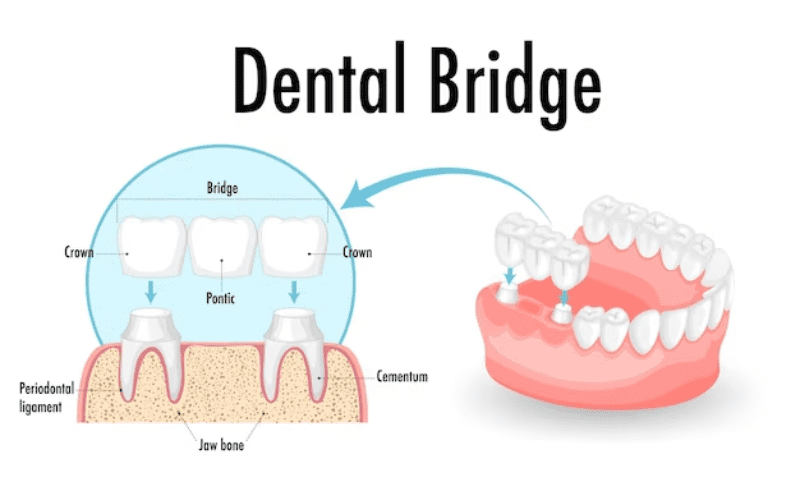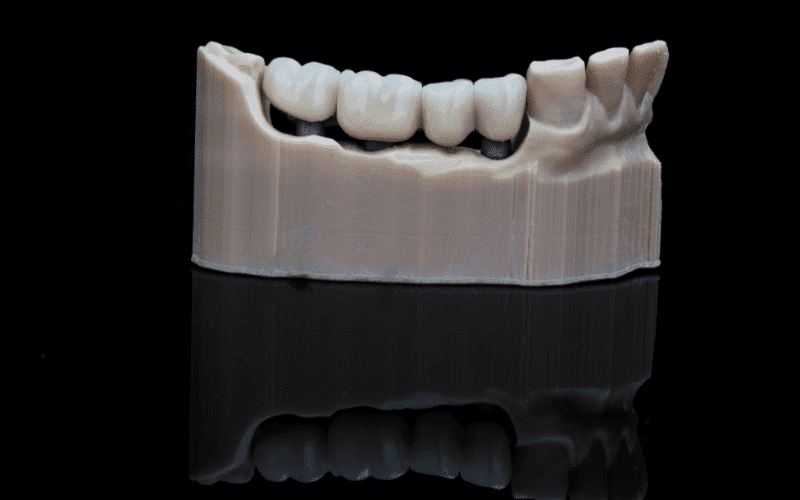Call: (810) 674-3060
What Are The Three Types Of Dental Bridges?

A glamorous smile can change any complicated situation in a second. However, the presence of missing teeth can be a hindrance to that perfect grin. Dental bridges emerge as a solution, offering aesthetic enhancement and functional restoration. In this exploration, we will unravel the three types of dental bridges, each designed to bridge the gap and restore your smile to its full glory.
Explanation Of Dental Bridges
Dental bridges are custom-made prosthetic devices to fill gaps left by lost teeth. Pontics are prosthetic teeth that are attached to regular teeth or dental implants. The kind is determined by the gap’s location, the quality of the neighboring teeth, and the individual’s preferences. This novel dental procedure restores a natural-looking grin and confidence.
The Traditional Bridge: A Time-Tested Classic
The classic dental bridge is a tried-and-true method of repairing the gap caused by a lost tooth. This type of bridge comprises one or more artificial teeth, known as pontics, held in place by dental crowns on nearby natural teeth. To accept the crowns, the surrounding teeth, known as abutments, are prepared by removing a part of their enamel.
A traditional bridge is a realistic choice for healthy teeth, but it necessitates structural adjustments, so addressing the pros and drawbacks with a dentist is essential.
The Cantilever Bridge: Optimal For Strategic Placement
A cantilever bridge is an excellent option when just one neighboring tooth is available for support. Like the typical bridge, the cantilever bridge employs a pontic to fill the gap, but it only requires one abutment tooth for support. This makes it a viable alternative when one side of the gap lacks healthy teeth.
While retaining healthy tooth structure, a cantilever bridge may impose pressure on the supporting tooth, prompting consultation with a dentist to establish its appropriateness for specific dental needs.
The Maryland Bridge: A Minimalist Approach
The Maryland Bridge is a more conservative choice for people seeking a more conservative approach to bridge dentistry. This form, a resin-bonded or adhesive bridge, eliminates the need to change the surrounding teeth significantly. Instead of crowns, the Maryland bridge is supported by a metal or porcelain framework attached to the backs of neighboring teeth.
Despite its lower biting force tolerance, the Maryland bridge is a popular alternative for front teeth because of its conservative form and emphasis on natural tooth structure.
Considerations For Choosing The Right Type
Choosing the best dental bridge requires considering aspects such as the oral health of the neighboring teeth, the gap location, the patient’s biting force, and aesthetic preferences. Working with a trained dentist ensures that the bridge chosen is compatible with dental health needs and personal preferences, addressing the physical gap, long-term oral well-being, and patient pleasure.
Dental bridges are more than simply a replacement for lost teeth; they represent a path to improved confidence and dental health. The key to selecting a classic, cantilever, or Maryland bridge is to make educated decisions suited to specific circumstances. These bridges not only cross physical barriers, but also represent a dedication to a brilliant smile. Scheduling an appointment with a trained dentist ensures that the bridge chosen is in sync with dental health requirements and personal preferences, offering a future of confident and full smiles. Accepting the transformational power of dental bridges is the first step towards a brighter, more confident future.


